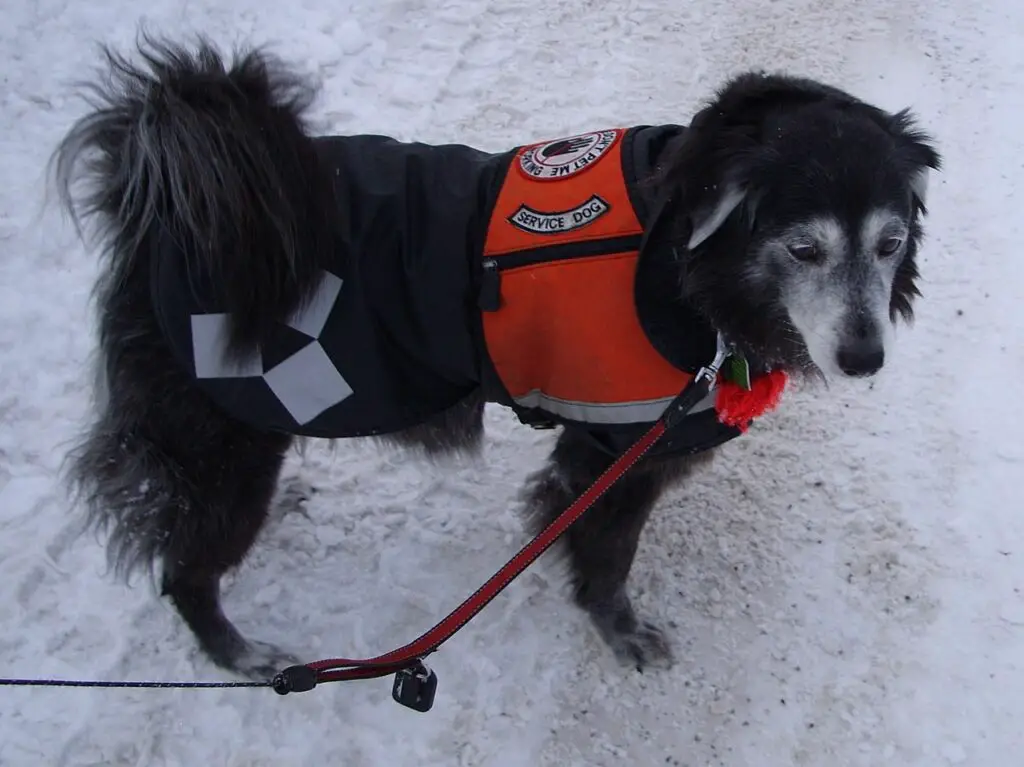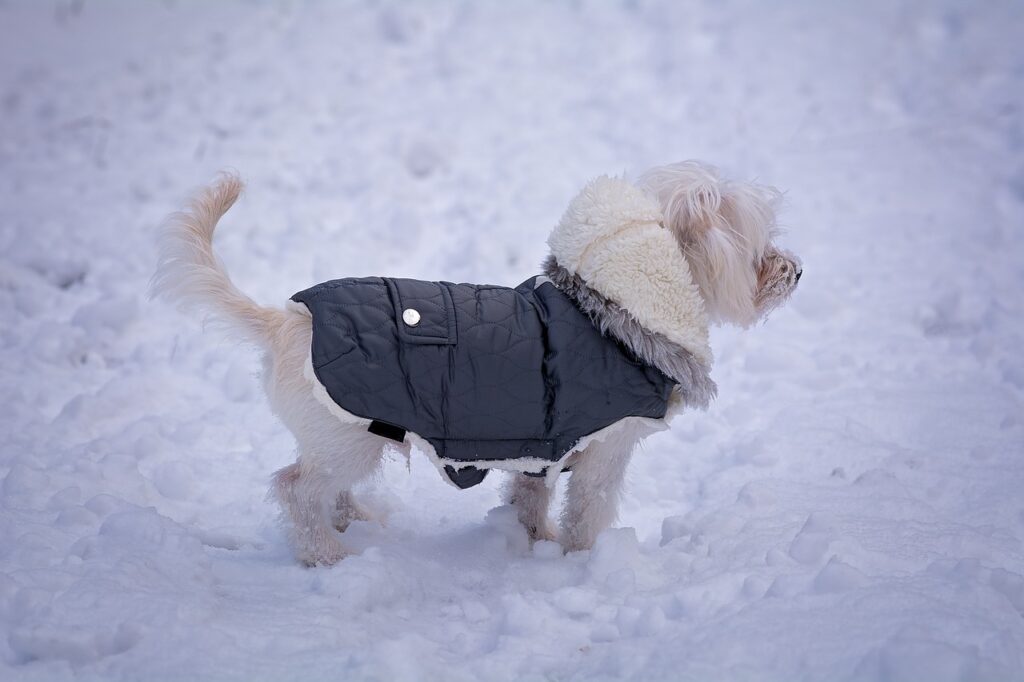Are you considering using a harness with your dog’s coat? Many pet owners face this dilemma, especially during the colder months when their furry companions need extra protection from the elements.
Combining a harness with a dog coat may seem like a tricky task, but it’s not impossible.
In this article, we’ll explore the benefits of using both a harness and a dog coat, as well as provide insights on how to make this combination work effectively without compromising your dog’s comfort or safety.
So, let’s dive in and discover the possibilities of this practical duo!
Key Takeaway
| Topic | Key Takeaways |
|---|---|
| Using a Harness with a Dog Coat | – Select a compatible dog coat – Choose the right size – Consider the type of harness – Put the harness on first – Check for comfort and mobility |
| Harness vs. Collar | – Harness advantages: better control, reduced risk of neck injury, suitable for specific breeds – Collar advantages: convenience, better for well-behaved dogs, less bulky – Choice depends on dog’s behavior, breed, and specific needs |
| Dog Coat Fit | – Measure your dog – Follow the manufacturer’s sizing chart – Check for comfort – Ensure proper coverage – Adjustable features – Allow room for growth |
| Measuring a Dog for a Coat with a Harness | – Place the harness on your dog – Measure the length, chest girth, and neck circumference – Check the manufacturer’s sizing chart – Choose a coat designed for use with a harness |
| Age to Start Wearing a Harness | – Start as early as puppyhood (8-10 weeks old) – Ensure proper fit – Focus on puppy’s comfort – Use positive reinforcement – Begin leash training and practice basic commands – Monitor for any issues |
| Conclusion | Successfully combining a harness and a dog coat requires understanding your dog’s needs and finding the perfect balance between function and comfort. Explore options to provide warmth and support for your furry friend during colder months. |
Can You Use a Harness With a Dog Coat?

Yes, you can use a harness with a dog coat. However, it’s essential to choose the right combination of accessories to ensure your dog’s comfort and safety.
Here are some tips to help you achieve this:
- Select a compatible dog coat: Look for dog coats specifically designed to work with harnesses. These coats typically have a hole or a zipper opening on the back, allowing easy access to the harness attachment point.
- Choose the right size: Make sure both the harness and dog coat fit your pet snugly but comfortably. A well-fitting coat will not restrict your dog’s movement, while a properly adjusted harness will provide adequate support and control during walks.
- Consider the type of harness: Some harnesses may work better with certain types of dog coats. For example, a step-in harness with a lower attachment point might be more suitable for a thick or heavily insulated coat, while a standard back-clip harness may work well with a lighter, less bulky coat.
- Put the harness on first: To ensure your dog’s safety, always put the harness on first, then put the coat on over the harness. This will prevent any potential chafing or discomfort that could occur if the harness is worn over the coat.
- Check for comfort and mobility: After fitting both the harness and coat on your dog, make sure they are comfortable and able to move freely. Adjust the fit as necessary and pay attention to any signs of discomfort.
By following these guidelines, you can successfully use a harness with a dog coat, providing your furry friend with warmth and security during colder months.
Should Dogs Wear a Harness Instead of a Collar?

Whether dogs should wear a harness instead of a collar depends on the specific needs and characteristics of the dog.
Harnesses and collars both have their advantages and disadvantages, and the choice between the two should be based on individual factors.
Here are some points to consider when deciding between a harness and a collar:
Harness Advantages:
- Better control: Harnesses provide more control over your dog, especially for those who tend to pull on their leash. A harness distributes the pressure evenly across the dog’s chest and back, reducing the risk of injury.
- Reduced risk of neck injury: Dogs that pull or lunge while wearing a collar can potentially injure their necks or trachea. A harness helps avoid this issue by distributing the force across a larger area of the body.
- Suitable for specific breeds: Some breeds, such as Pugs and Bulldogs, have short noses and are prone to respiratory issues. A harness is recommended for these breeds, as it puts less pressure on their neck and airways.
Collar Advantages:
- Convenience: Collars are generally easier to put on and take off compared to harnesses. They also provide a convenient place to attach identification tags.
- Better for well-behaved dogs: For dogs that don’t pull on their leash and walk calmly by their owner’s side, a collar may be sufficient.
- Less bulky: Collars are less cumbersome than harnesses, which can be beneficial for smaller dogs or those with thick coats.
In conclusion, the choice between a harness and a collar depends on your dog’s behavior, breed, and specific needs. It’s essential to carefully consider these factors to ensure your pet’s comfort and safety during walks and other activities.
How Snug Should a Dog Coat Be?
A dog coat should be snug enough to provide warmth and protection without restricting your pet’s movement or causing discomfort.
Here are some tips to help you find the right fit for your dog’s coat:
- Measure your dog: To ensure a proper fit, measure your dog’s length (from the base of the neck to the base of the tail), chest girth (around the widest part of their ribcage), and neck circumference. Use these measurements as a guide when selecting a coat size.
- Follow the manufacturer’s sizing chart: Each brand may have different sizing guidelines, so always refer to the specific sizing chart provided by the manufacturer when choosing a coat.
- Check for comfort: Once the coat is on your dog, make sure it doesn’t restrict their movement or cause any discomfort. Your dog should be able to walk, run, and play freely while wearing the coat.
- Ensure proper coverage: The coat should cover your dog’s back and sides adequately, providing ample protection from the cold, wind, and rain. However, it should not be too long that it interferes with their ability to go to the bathroom.
- Adjustable features: Look for coats with adjustable straps, buckles, or velcro closures to customize the fit for your dog’s unique shape.
- Allow room for growth: If your dog is still growing or prone to weight fluctuations, consider choosing a coat with some extra room for adjustment.
Remember that a well-fitting dog coat should be snug but not tight, allowing your pet to stay warm and protected without compromising their comfort or mobility. Regularly check the fit and adjust as needed to ensure your dog’s continued well-being during colder months.
How Do You Measure a Dog For a Coat With a Harness?
Measuring a dog for a coat with a harness involves taking accurate measurements of your dog’s body to ensure a proper fit.
Here are the steps to measure your dog for a coat that will be used with a harness:
- Place the harness on your dog: Before taking measurements, put the harness on your dog and adjust it to the correct fit. This ensures that the coat measurements will account for the added bulk of the harness.
- Measure the length: Measure your dog’s length from the base of its neck (where the collar would sit) to the base of its tail. Ensure your dog is standing straight while measuring.
- Measure the chest girth: Measure the widest part of your dog’s chest, typically around the ribcage and behind the front legs. Make sure the measuring tape is snug but not tight. If your dog will be wearing the coat over the harness, measure the chest girth with the harness on to account for the extra bulk.
- Measure the neck circumference: Measure the circumference of your dog’s neck at the point where the collar would sit. Again, if the coat will be worn over the harness, make sure to measure with the harness on.
- Check the manufacturer’s sizing chart: Use the measurements you’ve taken to find the appropriate size according to the coat manufacturer’s sizing chart. Each brand may have different sizing guidelines, so it’s essential to refer to the specific chart provided by the manufacturer.
- Choose a coat designed for use with a harness: Look for dog coats that have a hole or a zipper opening on the back, allowing easy access to the harness attachment point. This design ensures compatibility between the coat and harness.
At What Age Should a Dog Wear a Harness?
A dog can start wearing a harness as early as puppyhood, around 8-10 weeks old. Introducing a harness at a young age helps your puppy get accustomed to it, making walks and training sessions easier as they grow.
However, it’s essential to consider the following factors when introducing a harness to your puppy or dog:
- Proper fit: Make sure the harness fits snugly but comfortably on your dog. Regularly adjust the harness as your puppy grows to prevent it from becoming too tight.
- Puppy’s comfort: Allow your puppy to explore and get used to the harness without any pressure. You can start by letting them wear the harness for short periods indoors before attaching a leash and going for walks.
- Positive reinforcement: Use treats, praise, and playtime to create positive associations with the harness. This will help your puppy feel more comfortable and confident wearing it.
- Training: Once your puppy is comfortable with the harness, begin leash training and practice basic commands like “sit,” “stay,” and “heel.” This will help establish good walking habits and create a strong foundation for future training.
- Monitor for any issues: Keep an eye on your dog’s skin, fur, and overall comfort while wearing the harness. If you notice any signs of irritation or discomfort, adjust the fit or consider trying a different harness style.
Introducing a harness at a young age can be beneficial for both you and your dog, providing better control and reducing the risk of injury during walks and training.
Remember to prioritize your dog’s comfort and well-being when selecting and using a harness.
In Conclusion
In conclusion, using a harness with a dog coat can be a great solution to keep your pet warm and secure during those chilly months.
By considering the right type of coat, proper sizing, and harness compatibility, you can ensure that your furry friend is comfortable and well-protected.
Ultimately, the key to successfully combining these two essential pet accessories lies in understanding your dog’s needs and finding the perfect balance between function and comfort.
So go ahead, explore the various options available, and give your beloved companion the warmth and support they deserve!





Leave a Reply